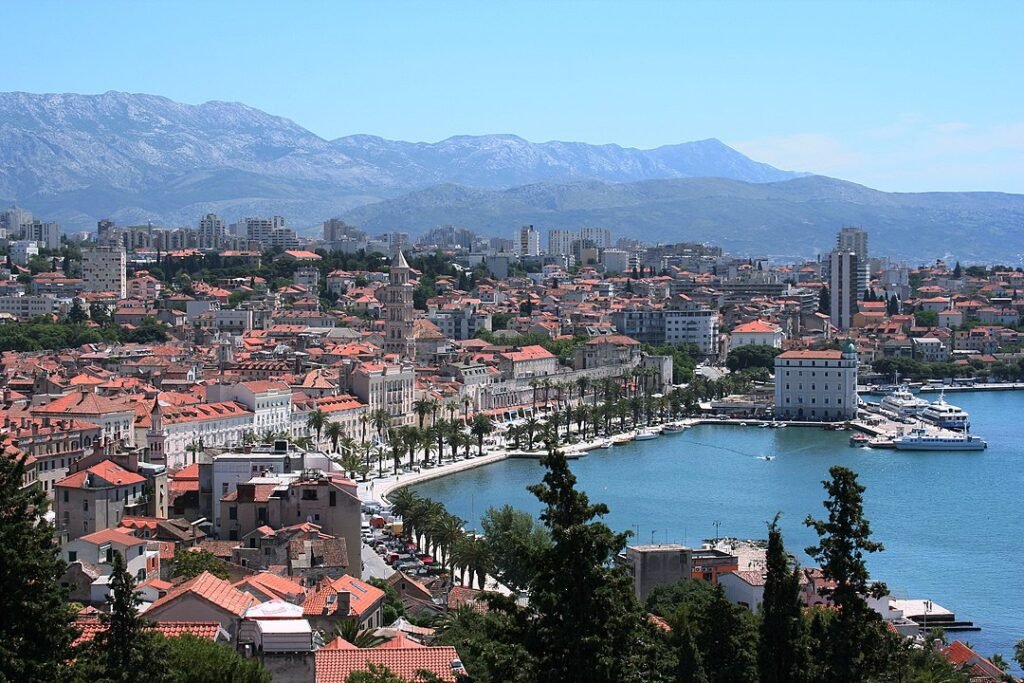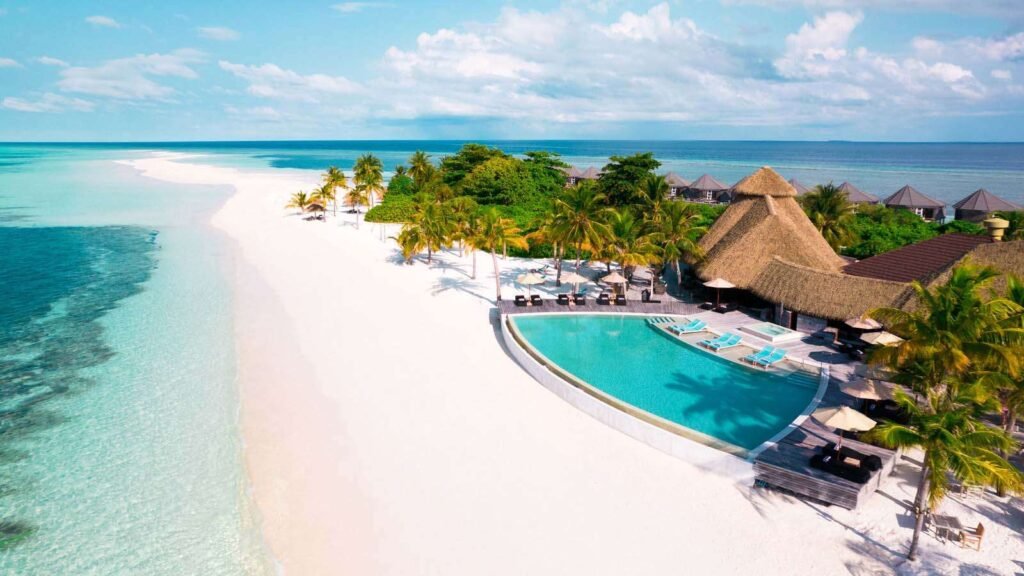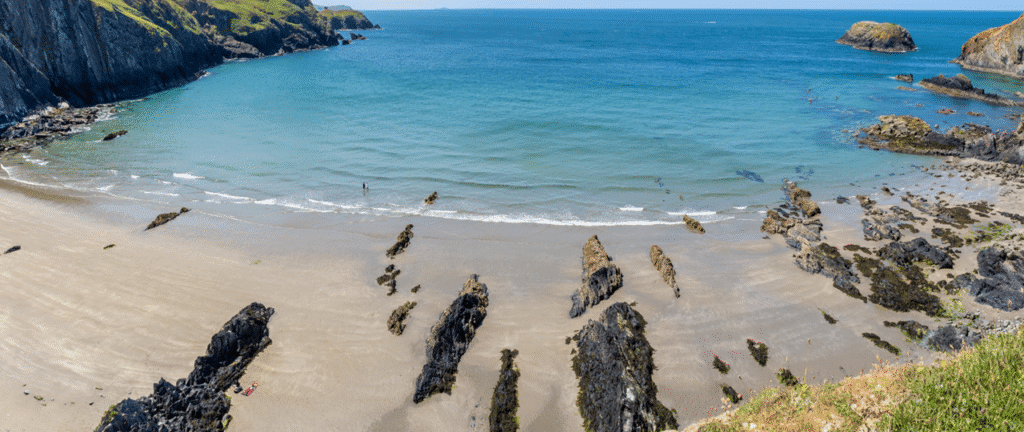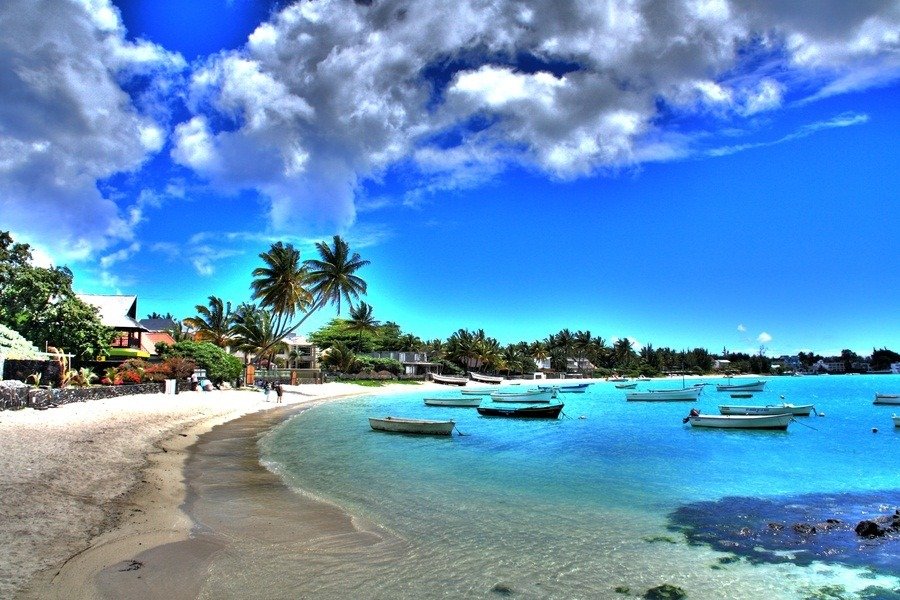
Island Hopping in Croatia: A 7-Day Itinerary for First-Timers
Croatia’s Adriatic coastline, with its turquoise waters and over 1,000 islands, is a dream for travellers seeking sun, history, and adventure. For first-timers, island hopping in Croatia offers a perfect blend of relaxation, culture, and stunning scenery. This 7-day itinerary, designed for families, couples, and solo travellers, guides you from Split to Dubrovnik, hitting the highlights of Croatia’s Dalmatian Coast. Expect vibrant towns, pristine beaches, and a taste of Mediterranean magic, all woven into a journey that’s as seamless as it is unforgettable.
A Brief History of Croatia’s Islands
Croatia’s islands have been shaped by centuries of trade, conquest, and cultural exchange. The Romans, Byzantines, Venetians, and Ottomans all left their mark, from the ancient walls of Dubrovnik to the medieval streets of Korčula, rumoured birthplace of explorer Marco Polo.
The islands, once strategic outposts along the Adriatic trade routes, are now cherished for their preserved history and natural beauty. Brač’s famous Zlatni Rat beach, Hvar’s lavender fields, and Mljet’s lush national park reflect a landscape that’s been both a battleground and a haven for centuries. Today, these islands are Croatia’s crown jewels, drawing visitors with their mix of old-world charm and modern allure.
Why Island Hopping in Croatia?
Croatia boasts 48 inhabited islands out of over 1,200 islets, each with its own character. From Hvar’s buzzing nightlife to Vis’s secluded coves, there’s something for every traveller. The Dalmatian Coast, stretching from Split to Dubrovnik, is the most popular route for island hopping, offering easy ferry connections and a mix of history, beaches, and cuisine.
In 2024, Croatia welcomed over 20 million tourists, with the islands seeing a surge in popularity due to their accessibility and diversity. Ferries, operated by companies like Jadrolinija and Krilo, make travel affordable and convenient, with tickets starting at €5 for short hops. The shoulder seasons—May to June and September to October are ideal for fewer crowds, lower prices, and warm weather perfect for swimming.
Major Destinations and Attractions
Split: The Gateway to the Islands
Your journey begins in Split, Croatia’s second-largest city and a bustling ferry hub. The UNESCO-listed Diocletian’s Palace, a 4th-century Roman fortress, is the city’s heart, filled with shops, cafés, and hidden courtyards. Stroll the Riva promenade for seafront views or climb Marjan Hill for panoramic vistas. Split’s vibrant energy makes it a great base before hopping to the islands.
Brač: The Golden Horn
A 50-minute ferry from Split lands you on Brač, home to Zlatni Rat, one of Europe’s most iconic beaches. This pebble spit shifts with the tides, creating a stunning backdrop for swimming and windsurfing. In Bol, explore quaint restaurants and hike Vidova Gora, the island’s highest peak, for breathtaking views. Brač’s olive groves and stone quarries add rustic charm.
Hvar: Glamour and Nightlife
Hvar is the Dalmatian Coast’s star, known for its lively nightlife and historic charm. Hvar Town’s 13th-century fortress offers sweeping views, while the Pakleni Islands, a short boat ride away, boast secluded beaches and crystal waters. Stari Grad, one of Europe’s oldest towns, is perfect for history buffs, with its ancient churches and lavender fields.
Korčula: Marco Polo’s Island
Korčula’s medieval walled town, often called “Little Dubrovnik,” is steeped in history. Visit the Marco Polo House or St. Mark’s Cathedral, then relax on Vela Przina beach. The island’s vineyards produce excellent Grk and Plavac Mali wines, perfect for a sunset tasting. Korčula’s laid-back vibe makes it ideal for couples and families.
Mljet: Nature’s Paradise
Mljet, a 45-minute ferry from Korčula, is a green oasis. Over a third of the island is a national park, home to two saltwater lakes and a 12th-century Benedictine monastery. Cycle or kayak through the park, or swim in the serene waters of Veliko Jezero. Mljet’s tranquillity suits those seeking nature and solitude.
Dubrovnik: The Pearl of the Adriatic
Your journey ends in Dubrovnik, a UNESCO World Heritage Site famous for its city walls and Game of Thrones filming locations. Walk the 2km city walls for sea views, explore the Franciscan Monastery, or take the cable car up Mount Srđ. Nearby, Banje Beach offers a relaxing end to your trip.
7-Day Island Hopping Itinerary
Day 1: Arrive in Split
Fly into Split Airport, just 12 miles from the city centre. Check into a hotel near the Old Town, like the Heritage Hotel Antique Split, and explore Diocletian’s Palace. Wander the narrow streets, grab dinner at a konoba (tavern), and soak up the lively atmosphere along the Riva. If time allows, visit the Mestrovic Gallery for Croatian art.
Day 2: Split to Brač
Take a morning ferry to Brač (50 minutes, €5–€10). Head to Bol and spend the day at Zlatni Rat beach, perfect for swimming or windsurfing. Hike Vidova Gora for sunset views, then dine on fresh seafood in Bol’s harbour. Stay overnight at a family-run guesthouse for an authentic island experience.
Day 3: Brač to Hvar
Catch a ferry to Hvar (1 hour, €6–€12). Check into a hotel in Hvar Town, like the Adriana Hvar Spa Hotel, and visit the fortress for panoramic views. Spend the afternoon at Hvar Beach or take a water taxi to the Pakleni Islands for snorkelling. In the evening, enjoy Hvar’s nightlife at spots like Hula Hula Beach Club.
Day 4: Hvar Exploration
Spend a full day on Hvar. Visit Stari Grad for its historic charm or join a speedboat tour to the Blue Cave on Biševo Island (book ahead, €80–€120). For a quieter day, explore lavender fields or rent a scooter to discover hidden bays. Dine at a vineyard for local wines and Dalmatian cuisine.
Day 5: Hvar to Korčula
Take a 1.5-hour ferry to Korčula (€8–€15). Explore Korčula Town’s medieval streets and visit the Marco Polo House. Relax on Vela Przina beach or cycle to Lumbarda for wine tasting. Stay in a boutique hotel like Aminess Lume and enjoy a rooftop cocktail at Massimo bar.
Day 6: Korčula to Mljet
Hop on a 45-minute ferry to Mljet (€5–€10). Check into a guesthouse near Mljet National Park and rent a bike to explore the lakes and monastery. Kayak or swim in Veliko Jezero, then enjoy a quiet dinner at a local konoba. Mljet’s serene vibe is perfect for unwinding.
Day 7: Mljet to Dubrovnik
Take a 1.5-hour ferry to Dubrovnik (€10–€20). Walk the city walls, visit the Franciscan Monastery, and ride the cable car up Mount Srđ. Relax at Banje Beach or take a short boat trip to Lokrum Island for a final swim. Depart from Dubrovnik Airport or extend your stay in this iconic city.
Travel Tips and Practical Advice
Getting Around
Ferries are the backbone of island hopping. Jadrolinija, Krilo, and TP Line operate reliable services, with catamarans being faster but pricier. Book tickets online via Ferryhopper at least a week in advance, especially in July and August, when ferries sell out. Short hops like Split to Brač cost €5–€10, while longer routes like Korčula to Dubrovnik run €10–€20. Check schedules, as low-season sailings (October–April) are less frequent.
When to Go
The shoulder seasons (May–June and September–October) offer warm weather (20–25°C), fewer crowds, and lower prices. July and August are peak season, with temperatures up to 30°C, ideal for swimming but crowded and pricier. Winter (November–March) sees limited ferry services and many closed businesses, so avoid unless you’re after solitude.
Booking and Accessibility
Book accommodation early, especially on Hvar and Korčula, where hotels fill up fast. Many islands have family-friendly guesthouses, and Dubrovnik and Split offer accessible options for travellers with mobility needs. Ferries are generally wheelchair-accessible, but confirm with operators. Most attractions, like Diocletian’s Palace and Mljet National Park, have partial accessibility, though cobblestone streets can be challenging.
Family-Friendliness
Croatia’s islands are great for families. Brač’s beaches are shallow and safe for kids, while Mljet’s national park offers easy trails. Hvar’s nightlife suits couples and solo travellers, but quieter areas like Stari Grad are family-friendly. Bring snacks for ferry rides, as onboard options are limited.
Budget Tips
Expect to spend €50–€100 per day per person, covering ferries, budget accommodation, and meals. Save by staying in guesthouses, eating at local konobas, and travelling in shoulder seasons. The Korčula Yellow Taxi, a hop-on-hop-off catamaran, is a cost-effective way to see multiple sights (€20–€30, summer only).
Where to Eat and Stay
Split
- Eat: Konoba Matejuška, a cosy tavern near the port, serves fresh seafood like octopus salad and black risotto.
- Stay: Heritage Hotel Antique Split, inside Diocletian’s Palace, offers luxury with history (from €150/night).
Brač
- Eat: Konoba Kopačina in Bol is famous for lamb dishes and local wines.
- Stay: Villa Daniela, a family-run guesthouse in Bol, is budget-friendly and near Zlatni Rat (from €80/night).
Hvar
- Eat: Fig Café in Hvar Town offers Mediterranean dishes with vegetarian options.
- Stay: Adriana Hvar Spa Hotel combines waterfront views and modern comfort (from €200/night).
Korčula
- Eat: LD Restaurant in Korčula Town uses local ingredients for dishes like seafood platters and Grk wine pairings.
- Stay: Aminess Lume Hotel, near Lumbarda, offers sea views and family-friendly amenities (from €120/night).
Mljet
- Eat: Konoba Antunović in Polače serves traditional Dalmatian fare near the national park.
- Stay: Guesthouse Pomena, a simple but charming option, is steps from the park (from €60/night).
Dubrovnik
- Eat: Nautika, near the city walls, is a splurge for fine dining with sea views.
- Stay: Hotel Excelsior, a 5-star waterfront hotel, blends luxury and history (from €250/night).
Seasonal Events and Special Experiences
Spring (May–June)
- Hvar’s Za Križen Procession (Easter weekend): A UNESCO-recognised event where locals follow a cross in an overnight pilgrimage.
- Split’s Food Festivals: Spring brings pop-up markets showcasing Dalmatian cheeses, wines, and olive oils.
Summer (July–August)
- Brač Film Festival (August): Outdoor screenings in Bol with a backdrop of the Adriatic.
- Korčula Sword Dance Festival (June–September): Traditional Moreska performances in Korčula Town, blending history and drama.
- Hideout Festival on Pag (July): A nearby island hosts EDM fans for a vibrant music festival.
Autumn (September–October)
- Dubrovnik’s Good Food Festival (October): A celebration of local cuisine with tastings and cooking demos.
- Hvar’s Wine Harvest: Join locals in Stari Grad for grape-picking and wine tastings.
Special Experiences
- Blue Cave Tour from Hvar: A speedboat trip to Biševo’s glowing cave is a must (book early, €80–€120).
- Kayaking in Mljet: Paddle through the national park’s lakes for a serene adventure (€20–€40).
- Dubrovnik Cable Car: Ride up Mount Srđ at sunset for unforgettable views (€27 round-trip).
Broader Travel Themes: Lessons from Croatia for UK Explorers
Croatia’s island-hopping model, blending history, nature, and accessibility, offers inspiration for UK travellers. The UK’s own islands, from the Isles of Scilly to the Outer Hebrides, share Croatia’s appeal of diverse landscapes and rich heritage. Like Croatia’s ferries, the UK’s CalMac ferries connect Scottish islands, making hopping from Arran to Mull a breeze.
The UK’s coastal paths, such as Cornwall’s South West Coast Path, echo Croatia’s scenic trails, while historic sites like Lindisfarne Castle mirror Dubrovnik’s fortifications. For families, the UK’s Isle of Wight offers beaches and attractions akin to Brač, while solo travellers can find solitude in Orkney’s rugged landscapes, much like Mljet’s tranquillity.
A UK Island-Hopping Itinerary
- Day 1–2: Isle of Wight – Explore Ryde’s beaches and Osborne House, Queen Victoria’s retreat.
- Day 3–4: Isles of Scilly – Fly or ferry from Cornwall to St Mary’s for white-sand beaches and Tresco’s subtropical gardens.
- Day 5–6: Isle of Arran – Scotland’s “miniature mainland” offers hiking, distilleries, and Brodick Castle.
- Day 7: Isle of Mull – Ferry from Oban to explore Tobermory’s colourful harbour and spot wildlife like puffins.
This Croatian-inspired approach encourages UK travellers to embrace multi-stop journeys, mixing urban hubs like Split with remote escapes like Mljet. Whether it’s the UK or Croatia, island hopping is about slowing down, savouring local flavours, and letting the journey unfold across the water.
Final Thoughts
Island hopping in Croatia is more than a holiday; it’s a chance to weave history, nature, and adventure into a single trip. From Split’s ancient palace to Dubrovnik’s glittering walls, this 7-day itinerary captures the Dalmatian Coast’s magic for first-timers. Whether you’re a family splashing in Brač’s shallows, a couple sipping wine in Korčula, or a solo traveller chasing Hvar’s sunsets, Croatia’s islands deliver. Plan ahead, pack light, and let the Adriatic guide you to memories that linger long after you’ve left the shore.


